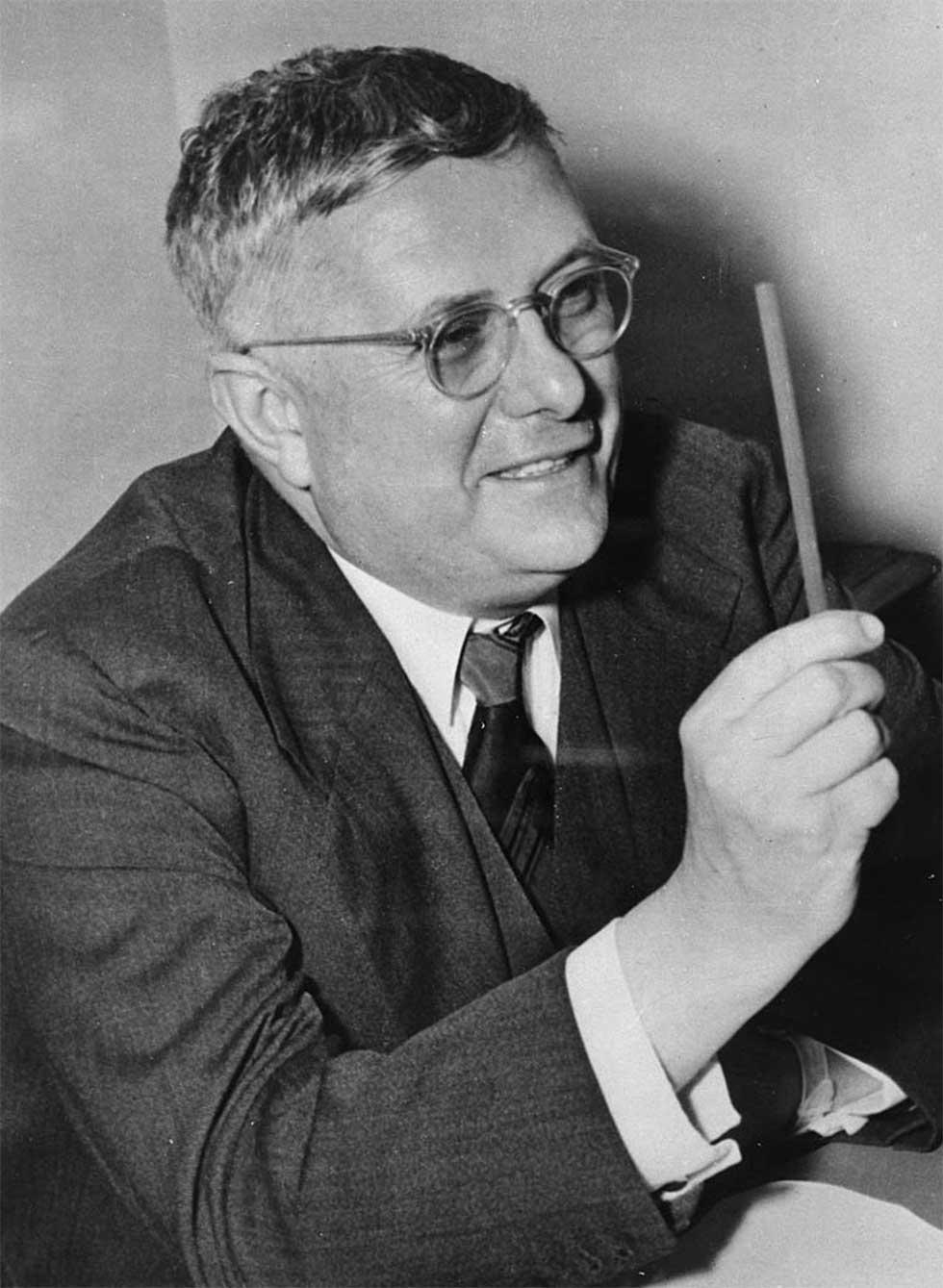


This black-and-white photograph shows Dr Herbert Vere Evatt, Deputy Prime Minister, Attorney-General and Minister for External Affairs. Taken in close-up, Evatt is seen smiling and holding a pencil in the air. He is wearing large glasses and a three-piece suit. The photograph was taken by the Australian Government Department of Information during the second Chifley Ministry's term of office from November 1946 to December 1949.
Educational value
- Herbert Vere Evatt (1894–1965) is seen here at the height of his power in Australian domestic politics and international affairs. Originally entering the Australian parliament in 1940, Evatt had been Deputy Prime Minister since 1946 and Attorney-General and Minister for External Affairs since 1941, serving under two Labor prime ministers, John Curtin and Ben Chifley. After Chifley lost the 1949 election, Evatt was Leader of the Opposition from 1951 to 1960.
- Evatt is widely considered to have had the greatest influence on international affairs of any Australian foreign minister. He was a member of the San Francisco Conference in 1945 that drew up the United Nations (UN) Charter, trying to ensure that the views of smaller and middle-ranking nations were given weight. In 1947 he was President of the South Pacific Regional Conference and Chairman of the British Commonwealth Conference on the Japanese Peace Treaty.
- Evatt's influence on international affairs was mostly felt in the UN. In 1948 he was elected the third President of the UN General Assembly, serving until 1949. He presided over the Assembly when the UN Universal Declaration of Human Rights was proclaimed. He had some role in easing the tension of the Berlin blockade, and protested the show trial and imprisonment of Cardinal Mindszenty by Hungarian communist leaders. He was the first Chairman of the UN Atomic Energy Commission and Chairman of the Palestine Commission.
- Before entering federal politics, Evatt was one of Australia's foremost legal figures, having being appointed the youngest-ever Justice of the High Court of Australia in 1930 at 36 years of age. He was admitted to the Bar in 1918 and appointed a King's Counsel in 1929. Evatt eventually returned to the law, resigning from the Australian parliament in 1960 and taking up an appointment as Chief Justice of New South Wales, serving until 1962.
- For many years following this photograph, Evatt was federal parliamentary leader of the Australian Labor Party (ALP) (1951–60) during some of its most turbulent times, including the disastrous split in 1955. Right-wing elements of the ALP were concerned by Evatt's role in the defeat of the referendum to ban the Communist Party in 1951 and his exposure in the Petrov Affair in 1954. When Evatt attacked them, they broke away to form the Democratic Labor Party.
- Commonly known as 'Doc' for his Doctorate of Laws, Evatt was one of Australia's great intellectual and public figures of the time – but his faults were just as noticeable as his strengths. He was enormously energetic but often unwilling to wait patiently for events to take their course. He was very ambitious and was perceived by colleagues as confrontationist. Prime Minister Curtin is said to have admired Evatt's capacity but to have withheld his trust.
Acknowledgments
Learning resource text © Education Services Australia Limited and the National Archives of Australia 2010.
Related themes
Need help with your research?
Learn how to interpret primary sources, use our collection and more.



